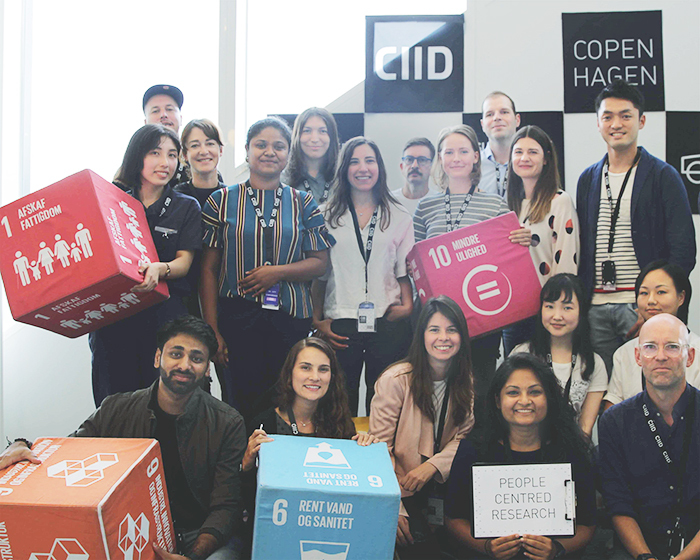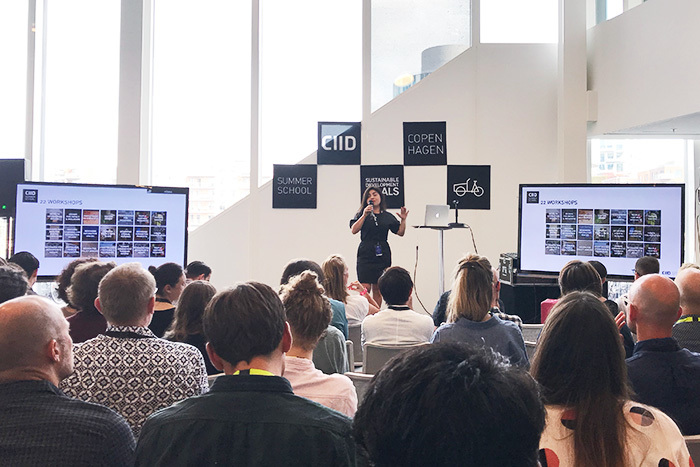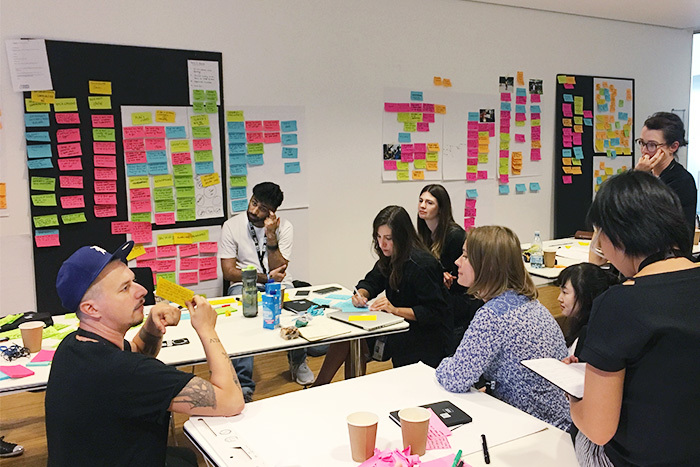Dentsu Inc. Business Design Square (hereafter BDS) is collaborating with the Copenhagen Institute of Interaction Design (CIID) to host the "CIID Winter School" in Japan in February 2020, where participants can learn design methodologies and approaches.
This time, we feature Yosuke Saito, a BDS Business Designer. Drawing from his experience participating in the "CIID Summer School" held in Copenhagen, he shares insights on CIID's appeal and the significance of the collaboration with BDS.
A Grand Laboratory Where New Wisdom Emerges
CIID is a design education institution founded in Copenhagen in 2006. Its vision is "to create social impact from creative thinking and connect it to business."
The annual Summer School in Copenhagen offers diverse design programs such as "People Centered Research," "Design for Sustainability," and "Designing Interactive Spaces."
The curriculum centers on participant-driven group work. Participants form teams of several members and spend five days applying design methodologies to address assigned social challenges. They complete outputs like projects or ideas by the final day, presenting them to the entire cohort, including participants from other concurrent courses.
It's a highly renowned school in Europe and America. I myself often heard its name while studying at a London design school in 2016. Back then, however, I viewed their work narrowly, thinking of it as a school for interaction design aimed at UX designers and engineers.
But after actually participating in the summer school, I realized CIID is a "grand laboratory" for generating new wisdom through the common language of design.
The instructors for each program are all top industry leaders: researchers active at NASA labs, Spotify's senior product designers, WeWork's design directors, and more. They don't just lecture; they act as facilitators. They create an environment where participants freely exchange ideas, occasionally adding the essence of the latest theories and insights.
Given the opportunity to engage with the cutting-edge insights of these top leaders, diverse talent from top companies worldwide gathers. In the "People-Centered Research" course I took at the Summer School, participants included not only UI/UX designers and others directly involved in design, but also executives, architects, archaeologists, and various other professionals from 13 countries.
The accumulation of opinions from participants with such diverse nationalities and backgrounds generates new wisdom. It was a truly exciting experience.

Group photo from the "People-Centered Research" course
Master the "Design Approach" in 5 Days and Turn It into a Business Asset
In the era of mass production and mass consumption, marketing focused on "data" could capture people's needs. For example, the thinking was: "X% of men in their 20s hold these values, so they want this kind of thing."
However, in the coming era, people's desires and behavioral patterns are expected to diversify further, making it increasingly difficult to grasp their essential needs through data alone.
This is why leading global companies are incorporating the following into their management:
Empathy → Definition → Idea Development → Prototype → Test
This design approach focuses deeply on people.
"Design" deeply focuses on "people." For instance, even among men in their 20s, there are diverse situations: doting fathers, individuals immersed in graduate research, and so on. Through field research and user observation, we delve into people's real stories and contexts.
A crucial element in design research is "making everything visible." Information gathered is written on sticky notes and posted across an entire wall, allowing for integrated analysis. Through repeated cycles of divergence and convergence, solution ideas emerge. This systematic process—Research → Discover Insights → Define Questions → Identify Business Opportunities—is unique to the design approach, moving beyond mere inspiration.
Another strength of design is the frequent use of "prototyping." By physically creating ideas on paper or other materials as we progress, we can refine concepts with a sense of speed.
In Japan, where there's often a tendency to fear failure and aim for highly polished ideas from the outset, this design mindset is still relatively rare at the operational level. We believe the significance of CIID and BDS collaborating lies in communicating this approach—one that involves hands-on learning from failure, collaboration among diverse members, and practically shaping new ideas—and making this school an opportunity to shift the mindset and perspective of Japanese companies, spurring action toward the future.
The "CIID Winter School," launching in February 2020, offers eight distinct curricula.
・People-Centered Research
・Service Design
・Intro to Interaction Design
・Prototyping as a Process
・Designing for Impact & Inclusion
・Designing Interactive Spaces
・Change Management through Design
・Future Casting
<Details for each course>
BDS has selected curricula from CIID's portfolio of over 20 courses that seem well-suited for Japanese participants or are expected to be in high demand. Whether you seek breakthroughs to create new ventures or want to reexamine existing businesses through fresh approaches, this five-day program will equip everyone with valuable tools for business success.

Opening of the Summer School in Copenhagen
Circular Economy: Thinking Globally About Services as the New Global Standard
The design thinking taught at CIID doesn't stop at focusing solely on "people." The institution advocates for "interacting design." It believes that truly good products and services emerge only when systems are created that deliver value not just to a single user, but to the surrounding community and the global environment. CIID refers to this as "Life-Centered Design."
The curriculum is structured around themes outlined in the SDGs (Sustainable Development Goals), such as gender equality, climate change, and sustainable production and consumption. CIID itself is an educational institution partnered with the United Nations, ensuring a steadfast commitment to addressing social challenges.
In Denmark and other Nordic countries, the concept of the "Circular Economy" is widely practiced across industries. It represents a shift from the linear "make, use, dispose" model to a new economic system with lower environmental impact. This system recirculates value without generating waste, moving away from mass production and mass consumption. There is a strong, deeply ingrained awareness at the everyday level that "humans cannot survive unless the global environment is sustainable."
Based on the circular economy concept, which aligns very well with CIID's proposed "interactive design," these countries are rapidly giving birth to new services and becoming pioneers driving innovation. It is already becoming a global standard and will undoubtedly become necessary for Japanese companies in the near future.
However, currently, few companies in Japan have fully embraced the "Circular Economy." At its core, this may stem from the mindset that "while protecting the global environment is desirable if possible, it is a social contribution activity unrelated to our own business." Unless companies recognize it as "an indispensable concept for business success," they risk being left behind globally.
Conversely, the SDGs, closely tied to the circular economy, are gaining traction in Japanese society, with companies increasingly adopting them. Crucially, however, the key is not for companies to pick and choose individual SDG items as social contribution activities. Instead, they must engage in fundamental discussions about "what value their company provides to the world" and "what impact they have on society," and then put this into practice.
While the SDGs represent a shared agenda, merely deciding which goal to anchor your business development to will lead to dead ends. I believe CIID's approach and tools are highly effective for cultivating the perspective, attitude, and mindset needed to confront your own vision and take action.
We sincerely hope many people will experience this firsthand at the CIID Winter School.

Classroom scene from the Summer School held in Copenhagen
"CIID Winter School" Information





